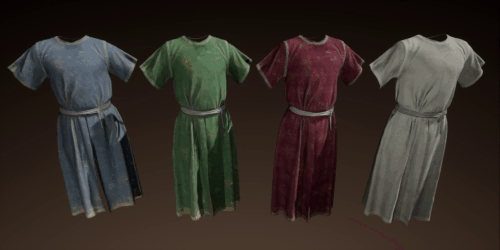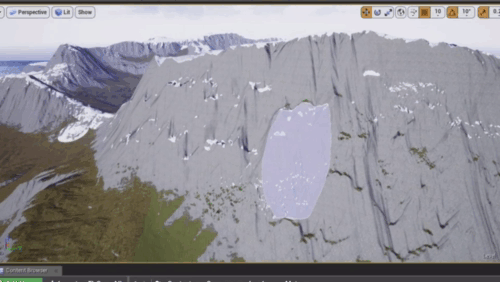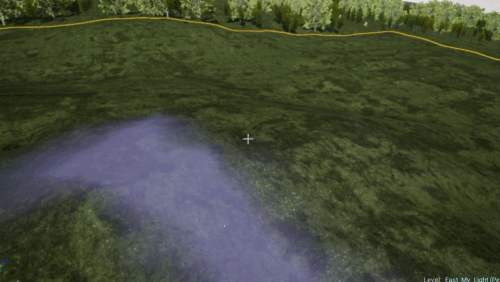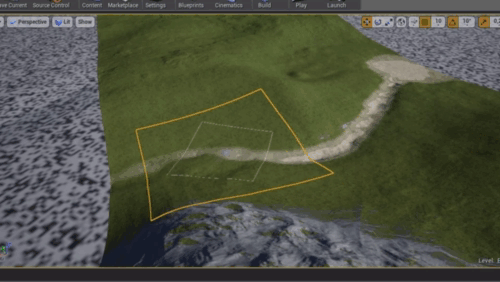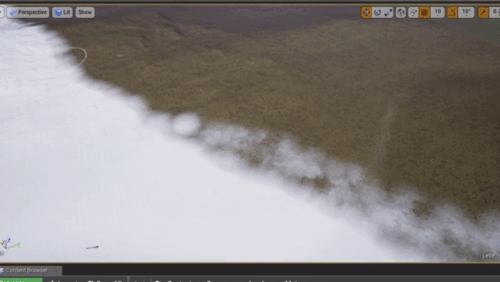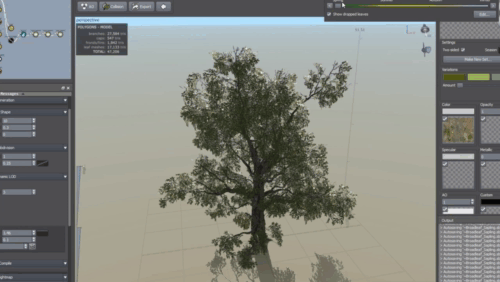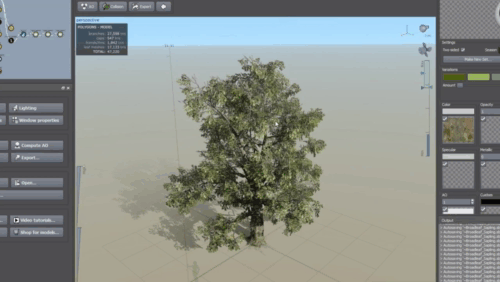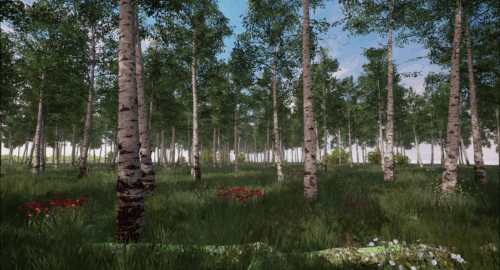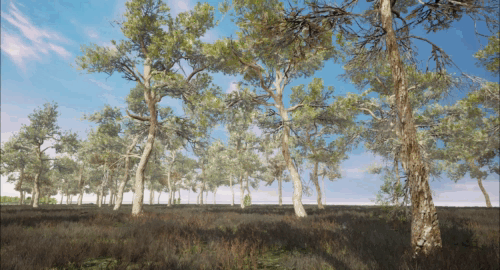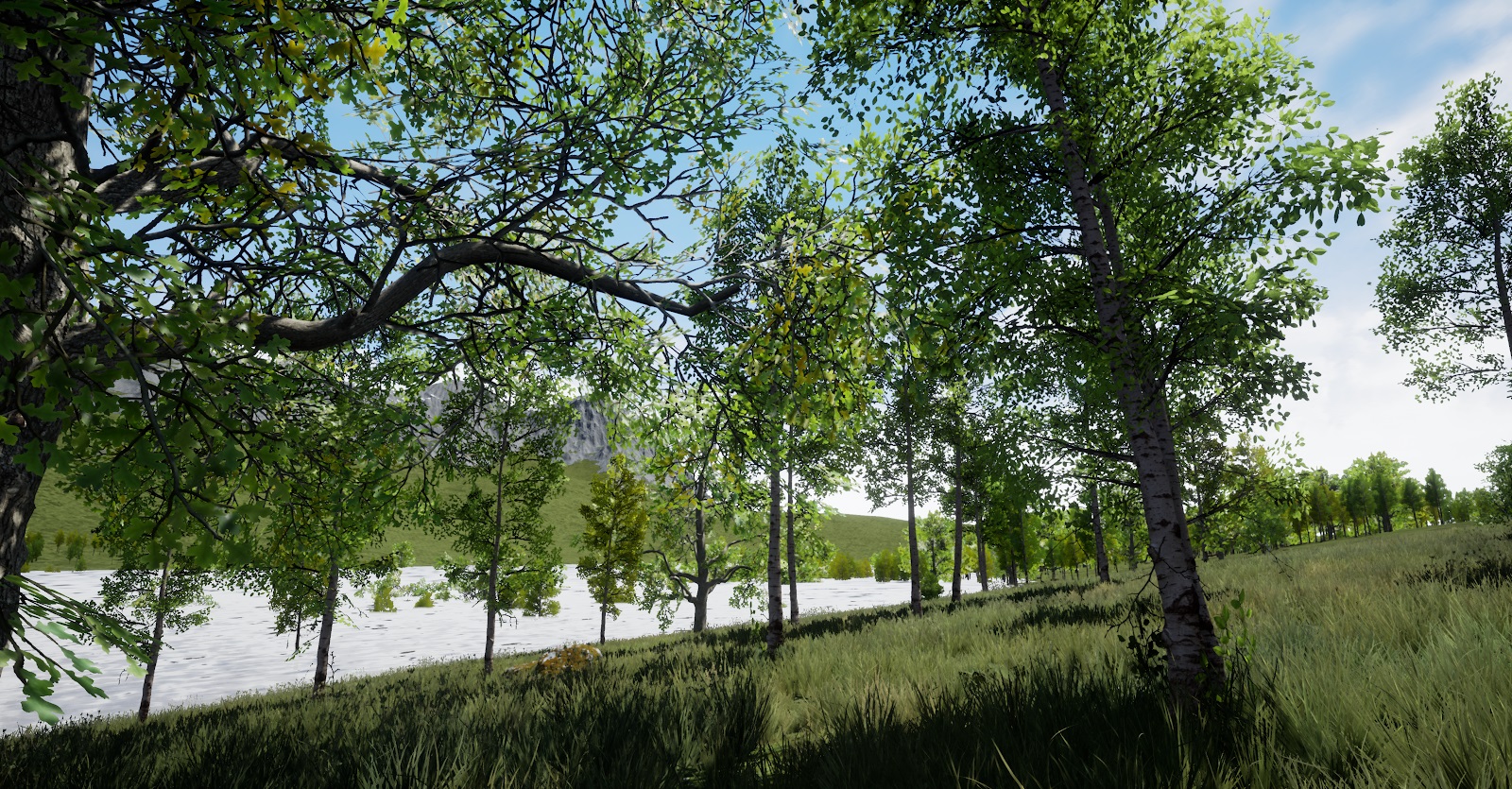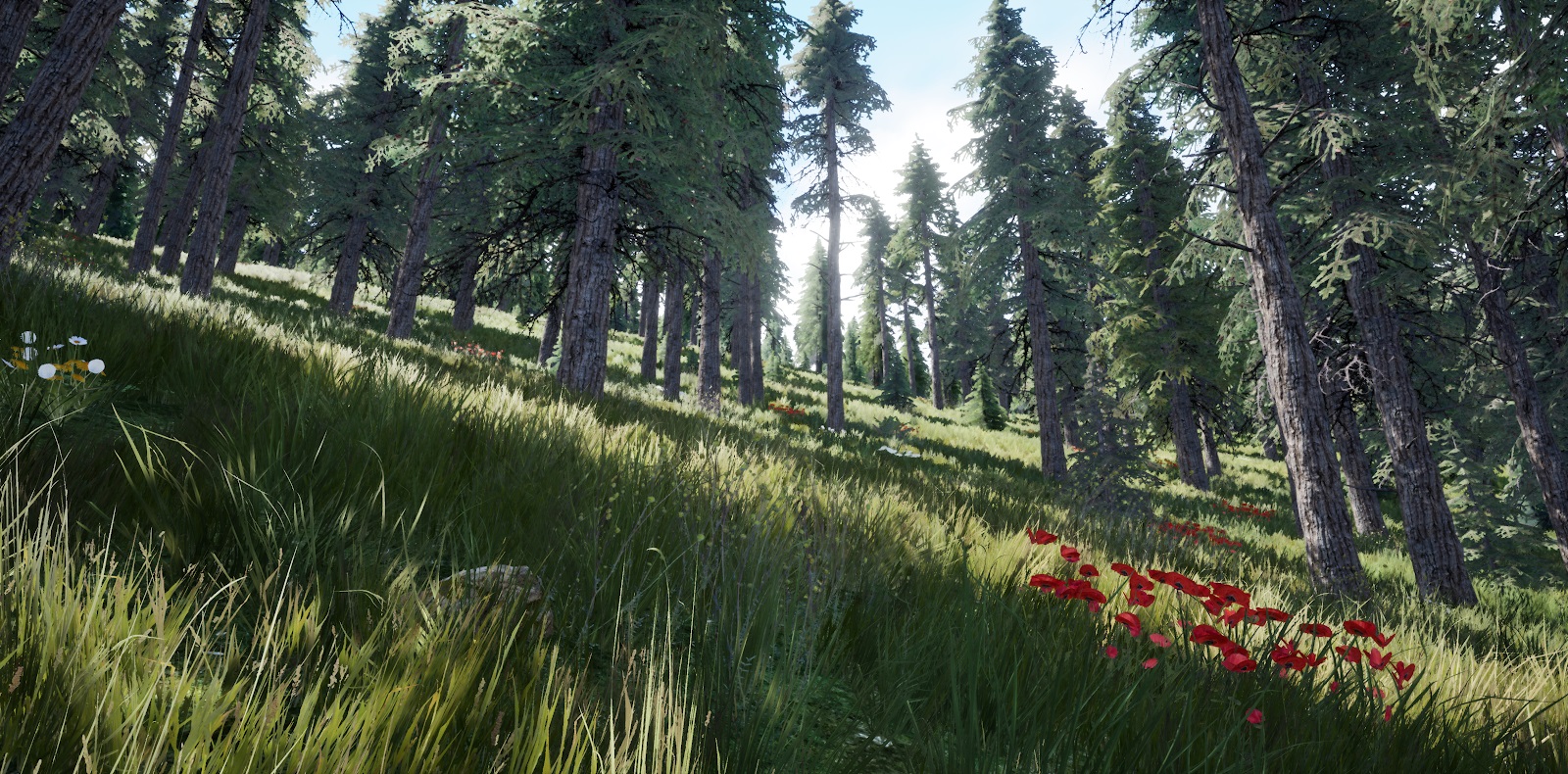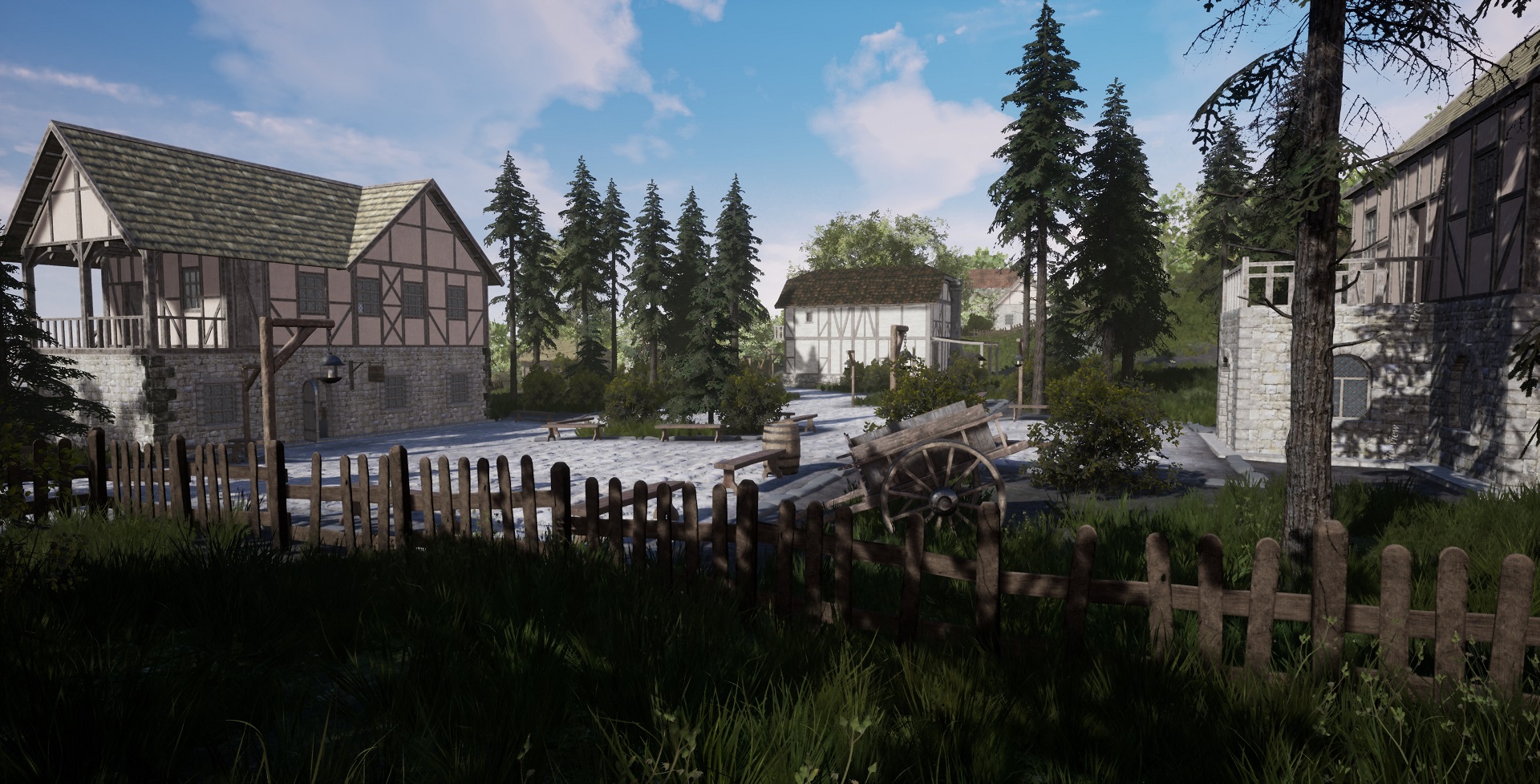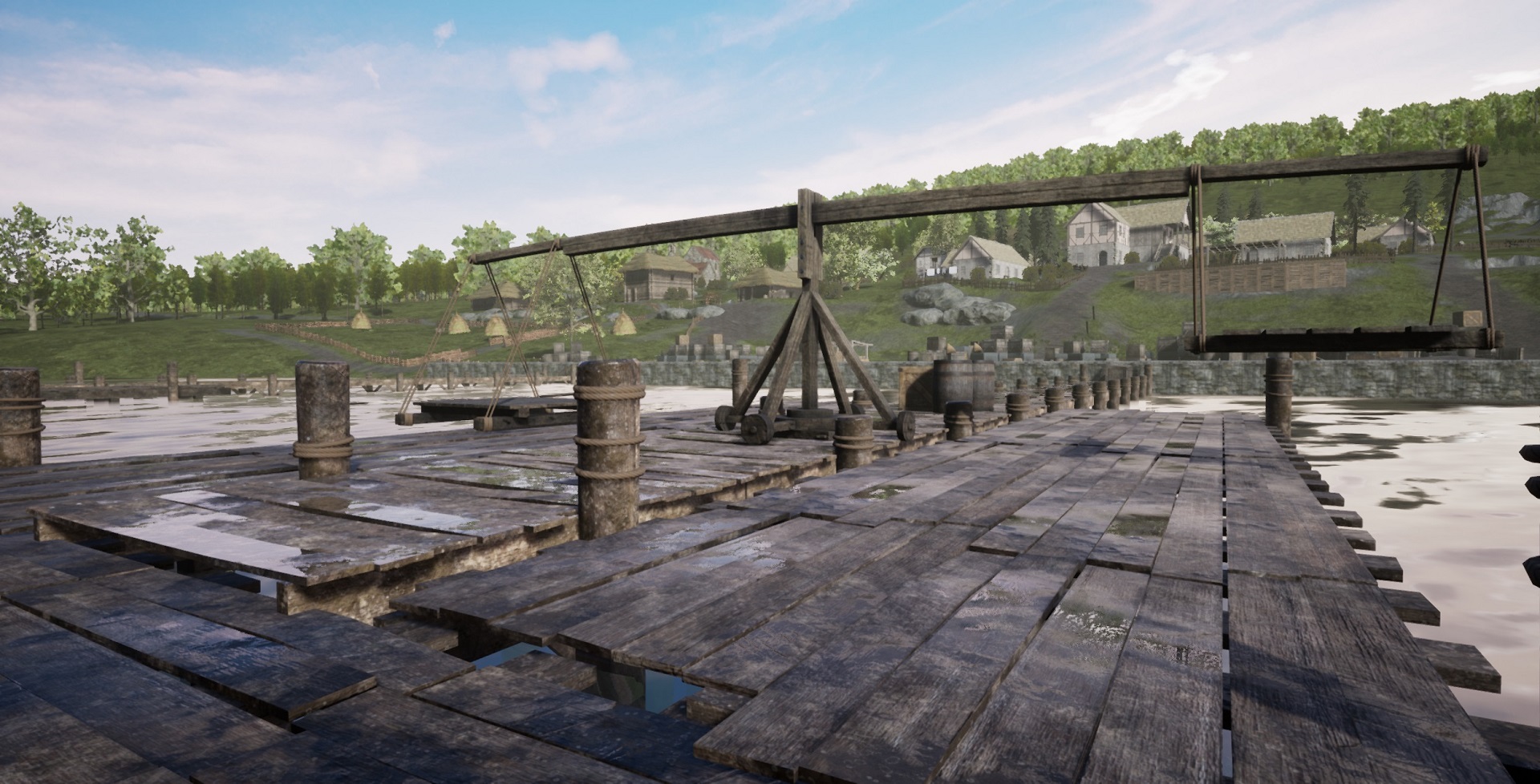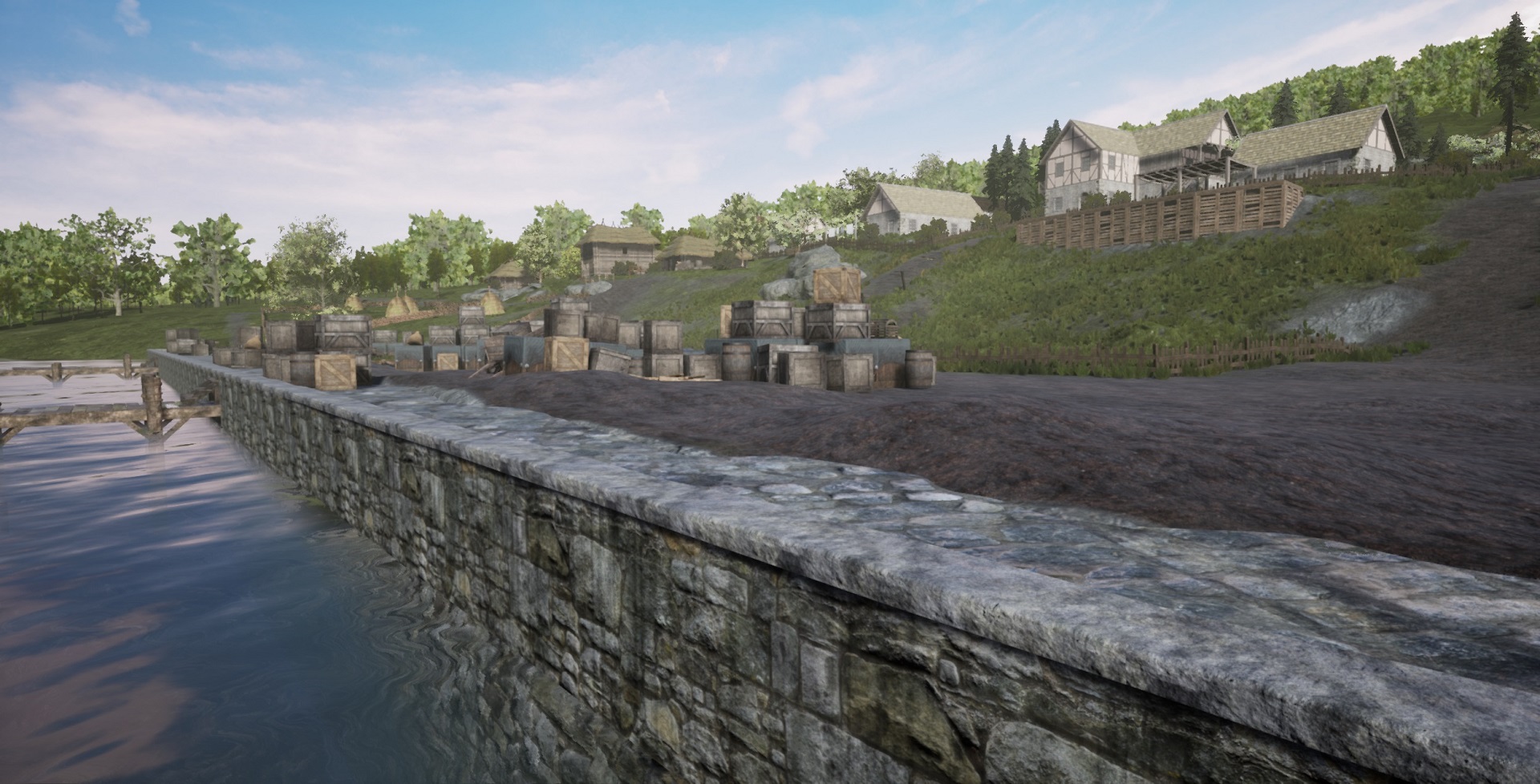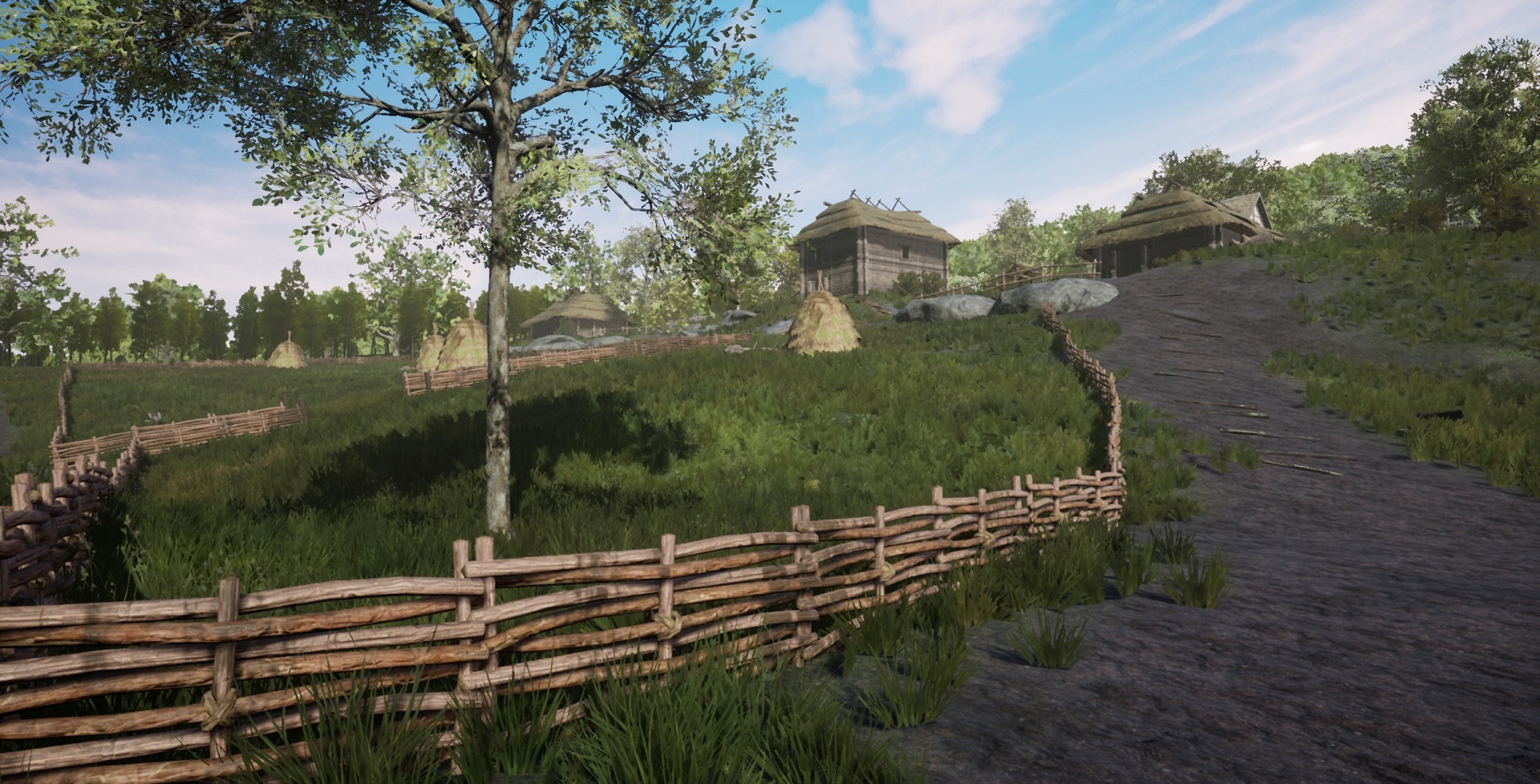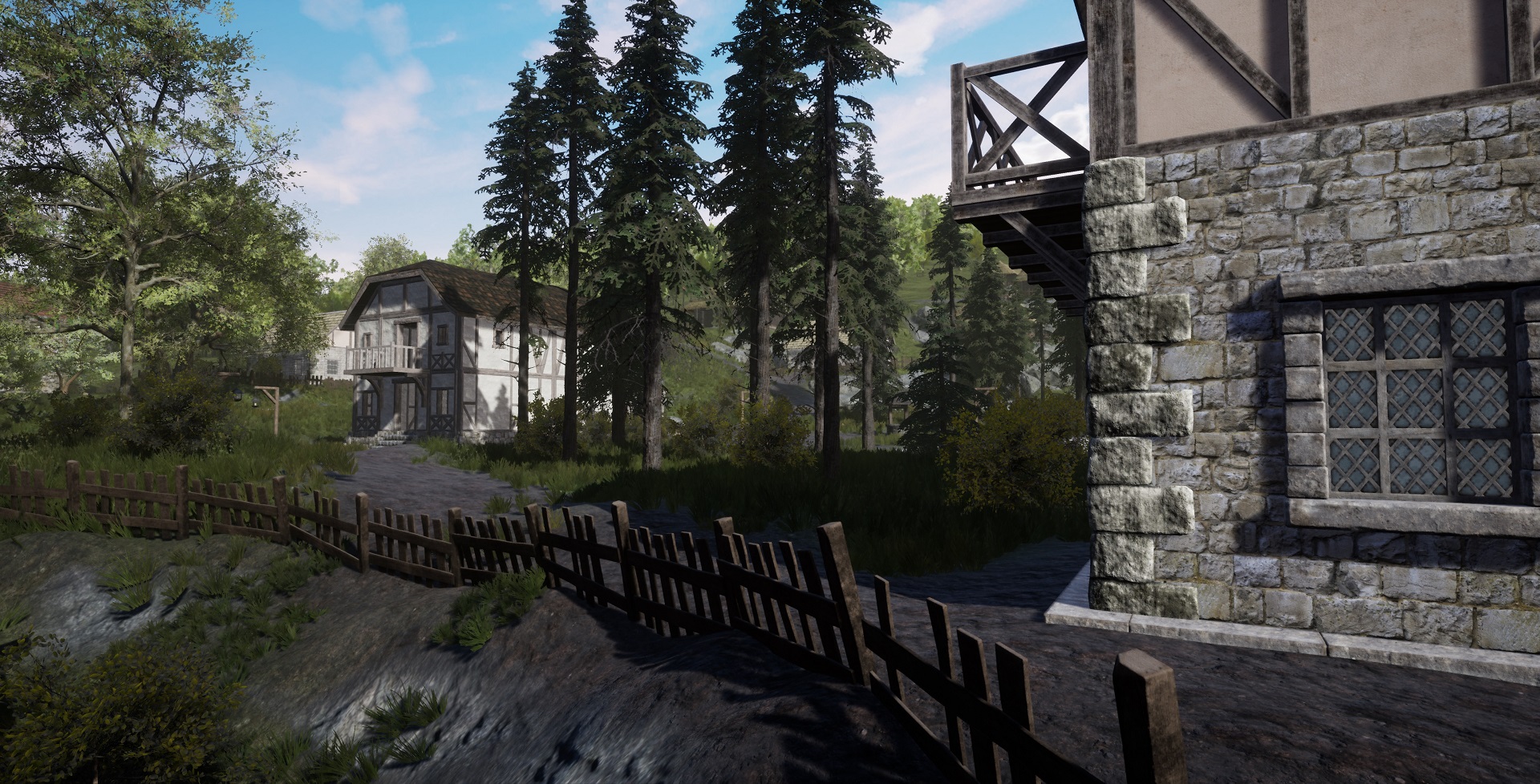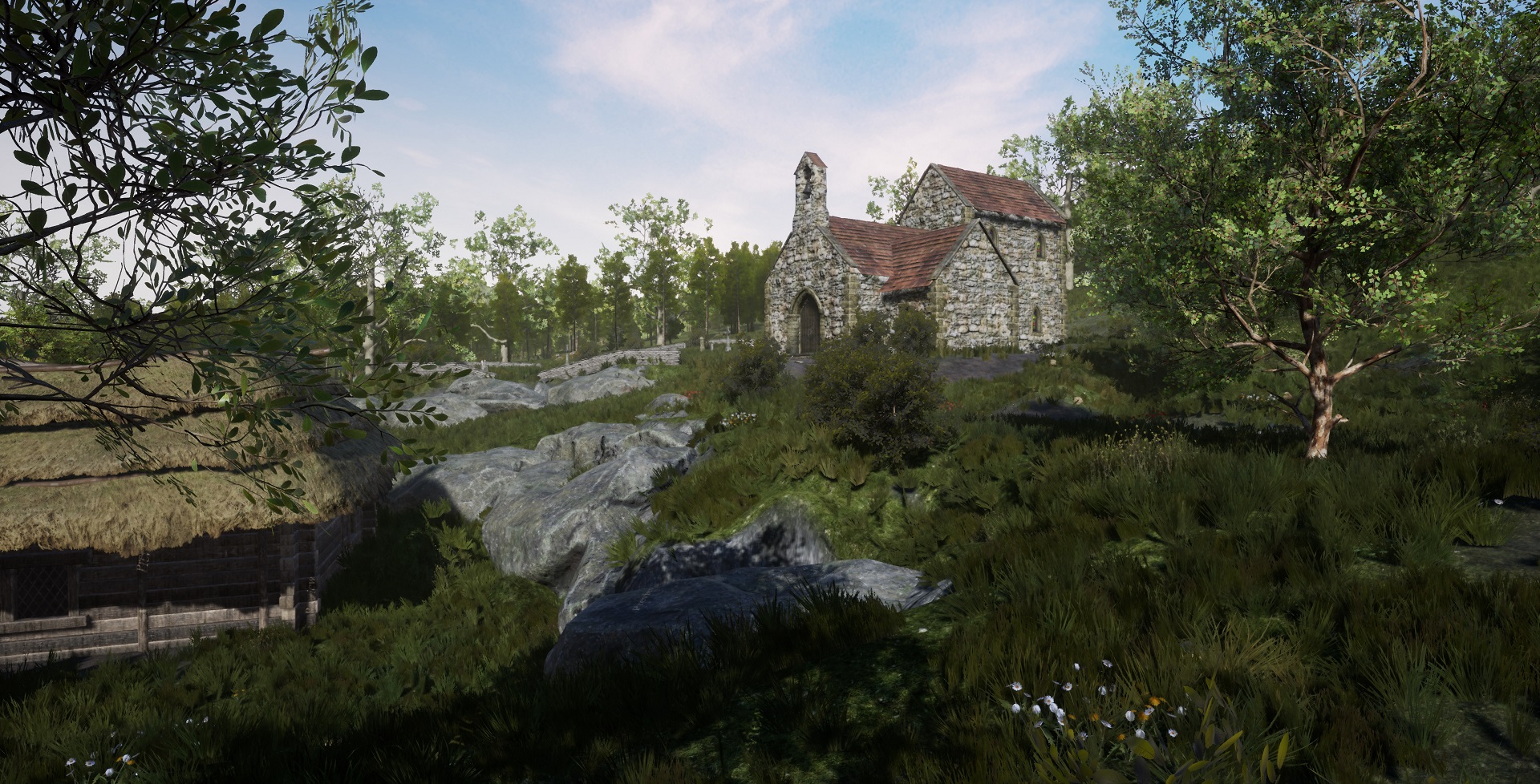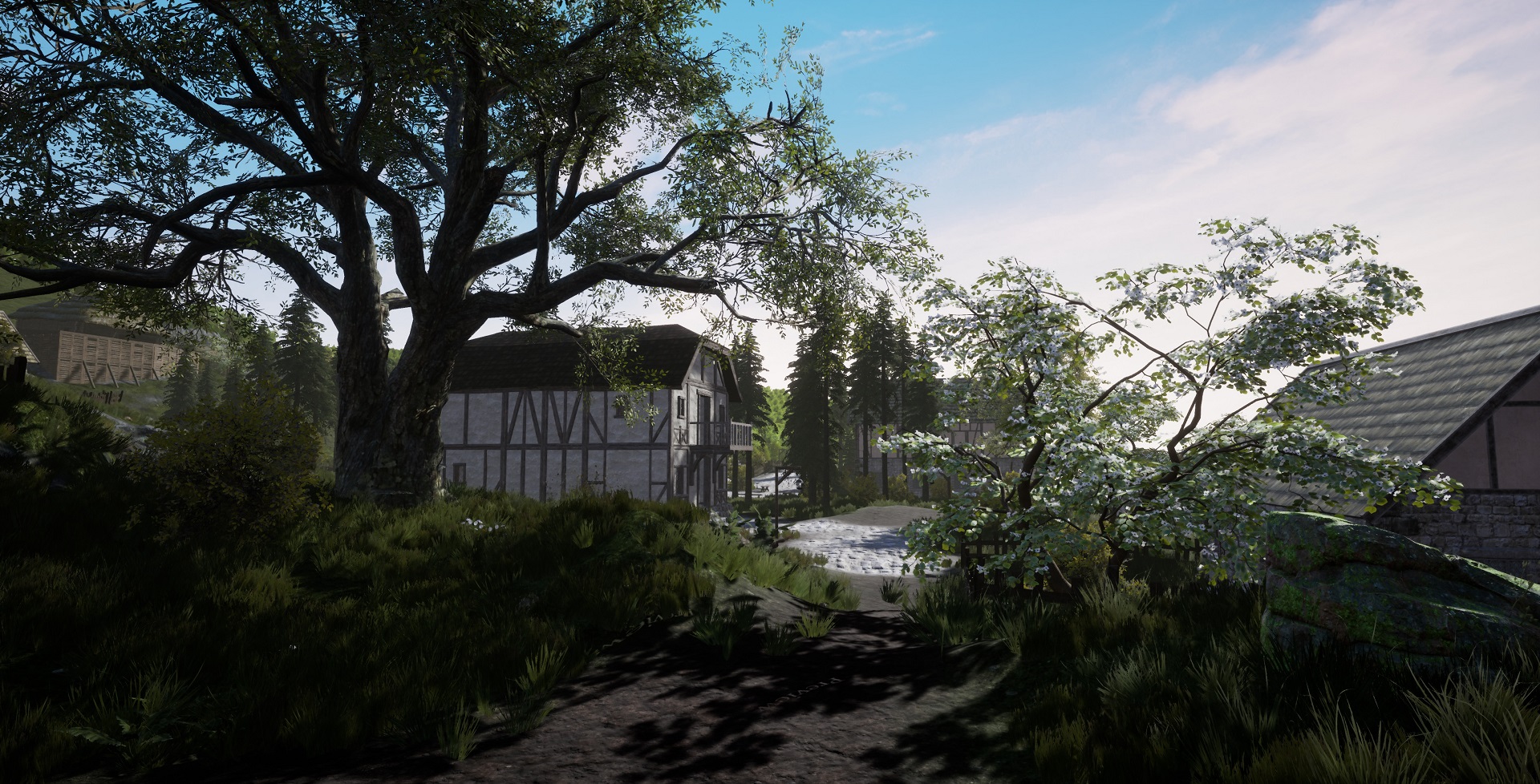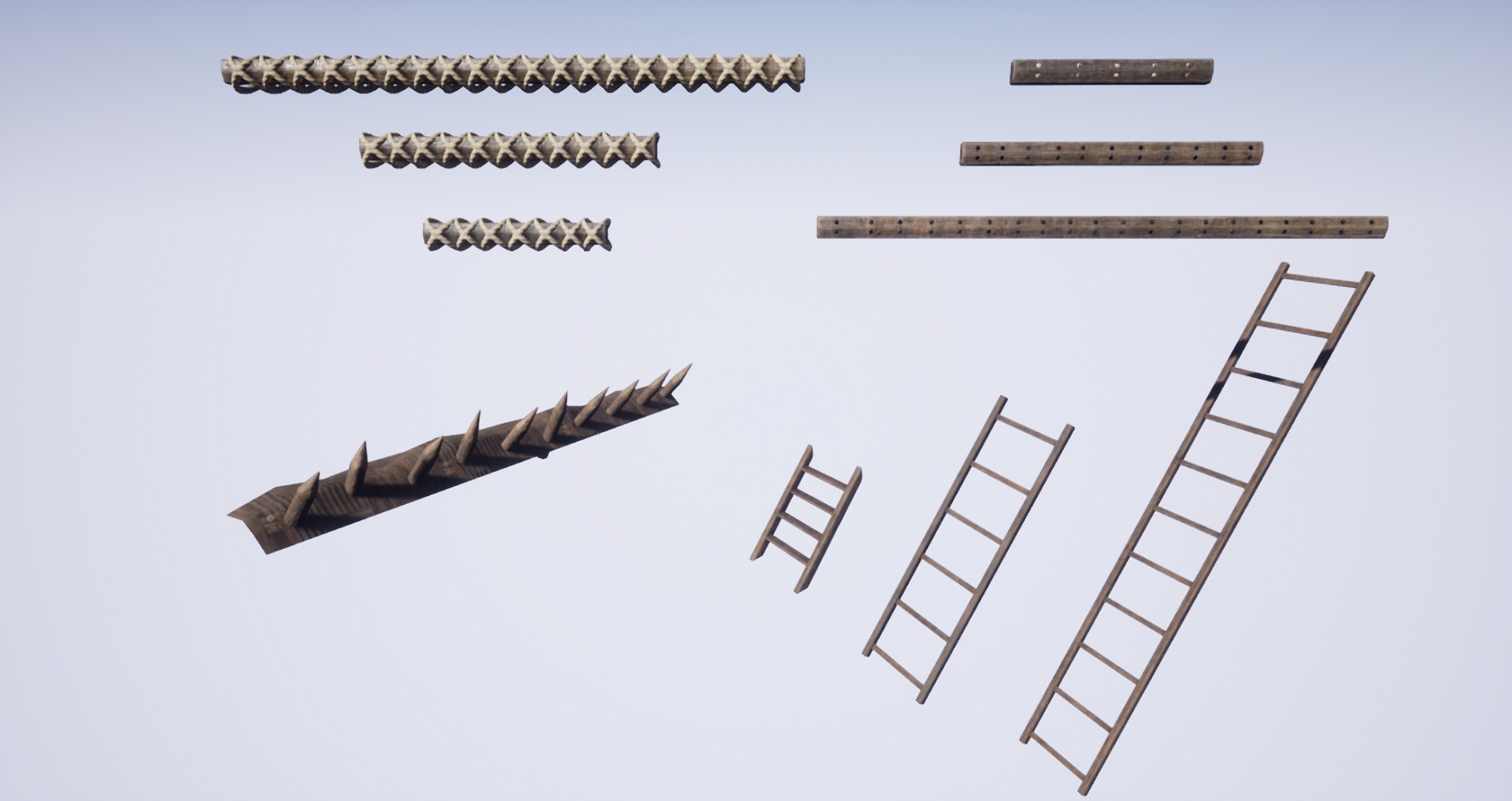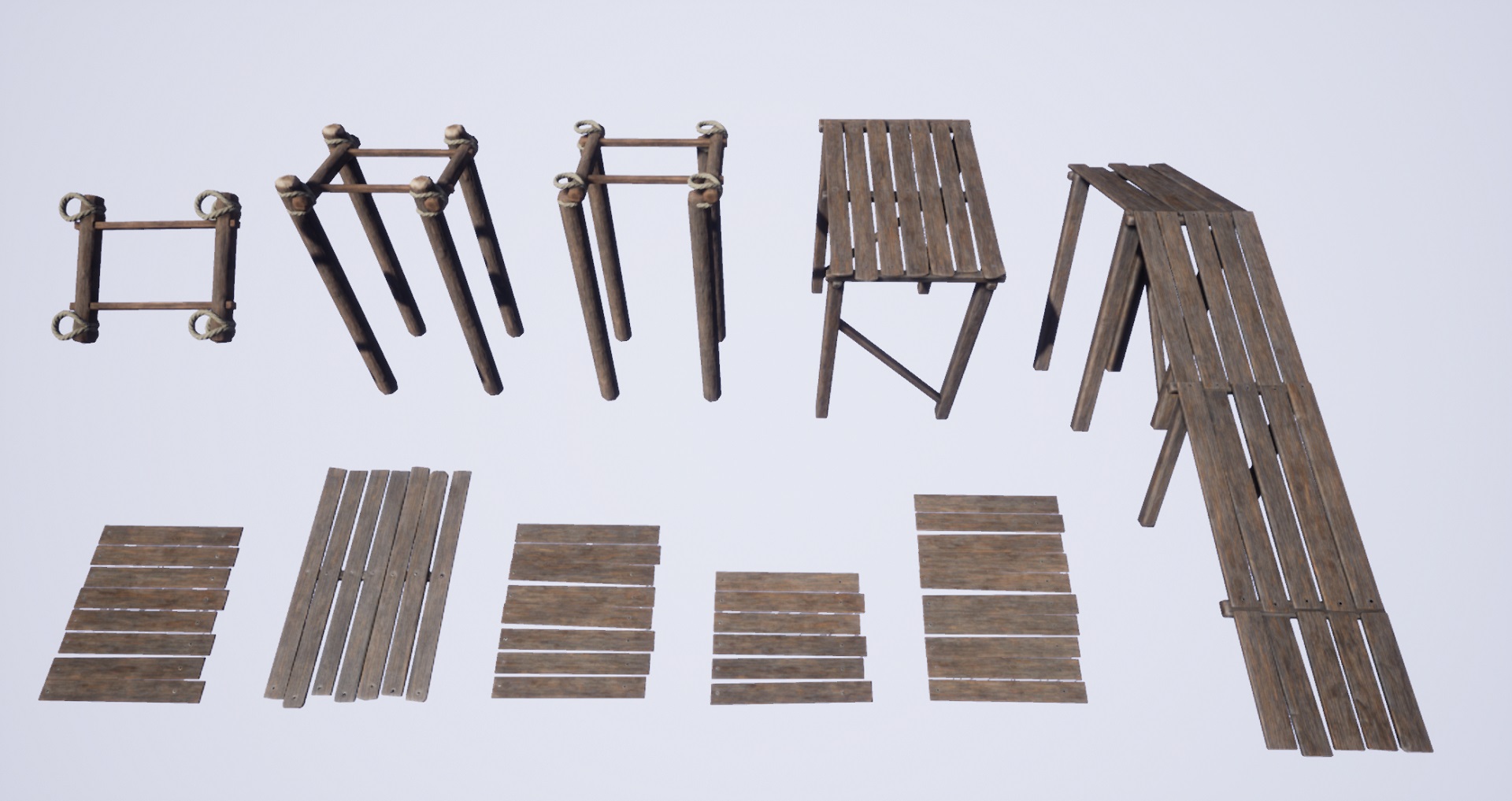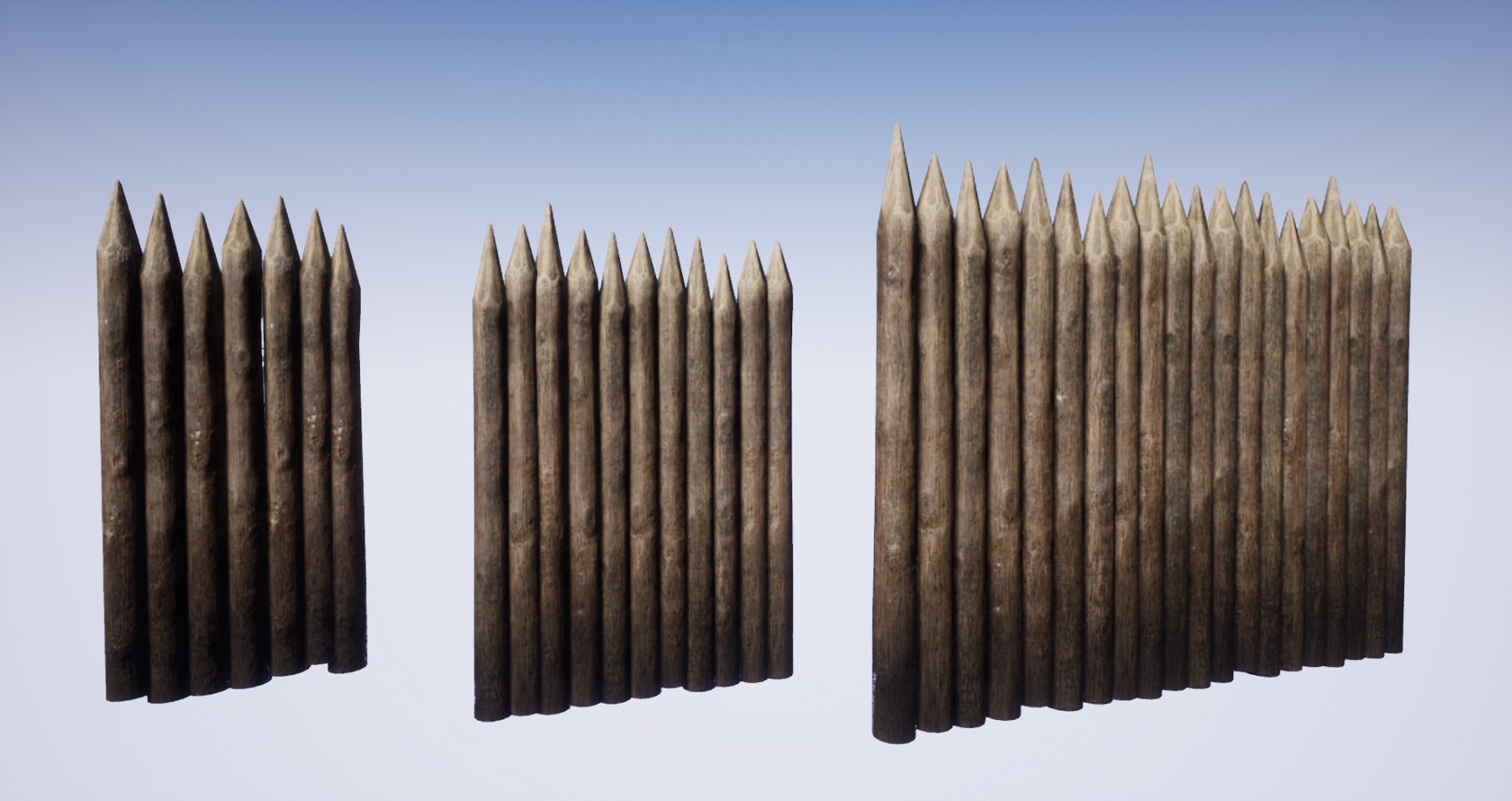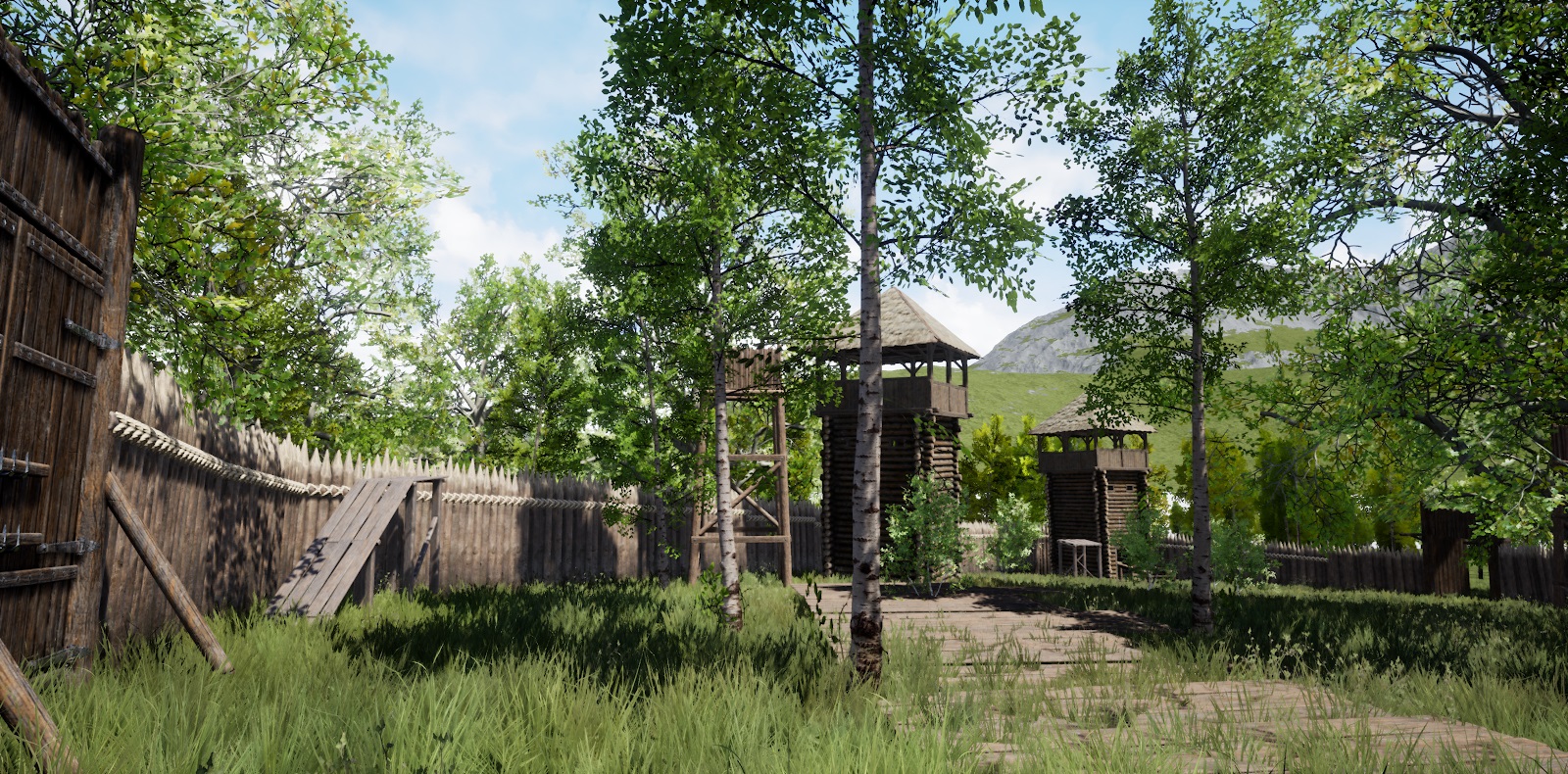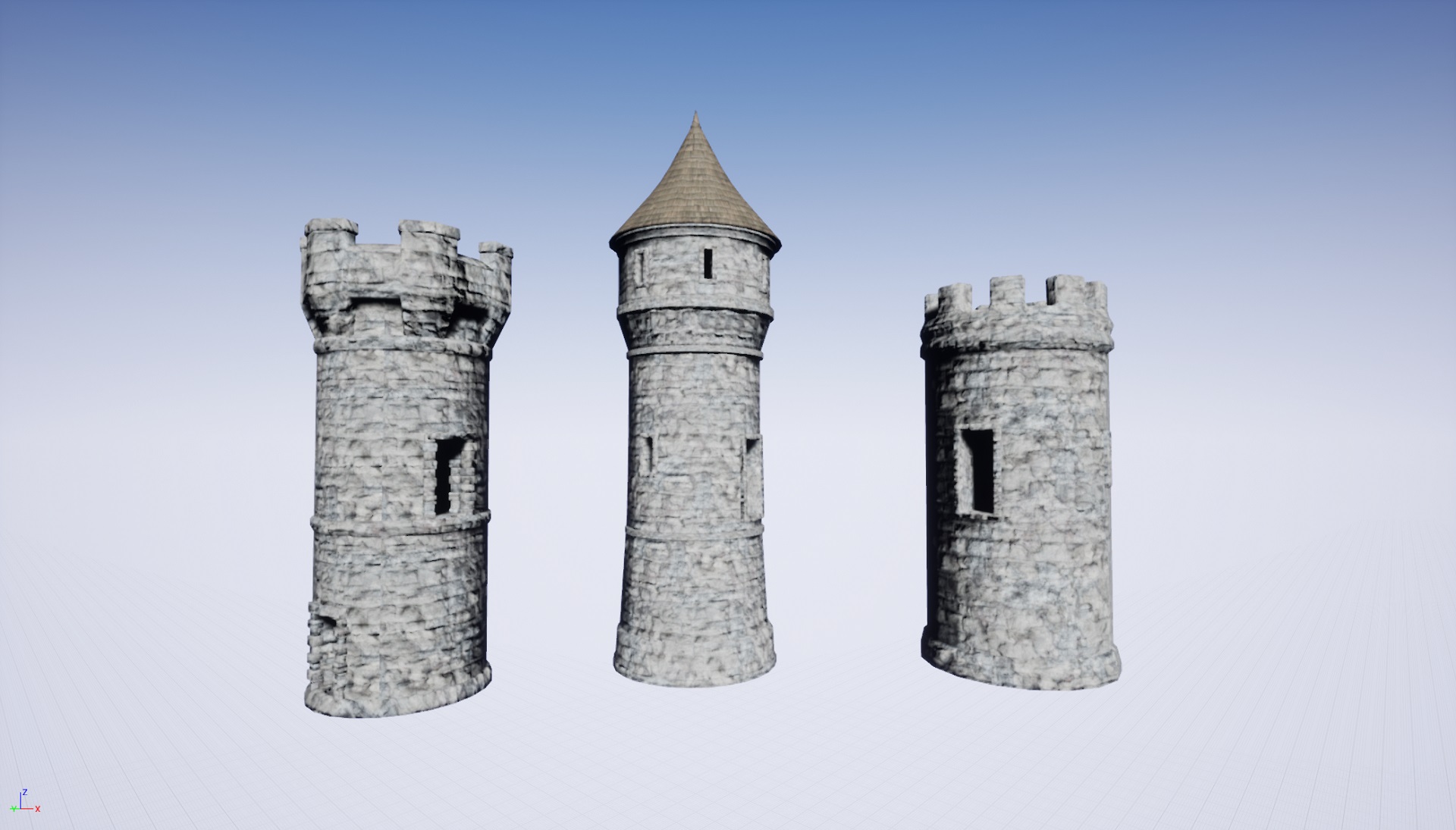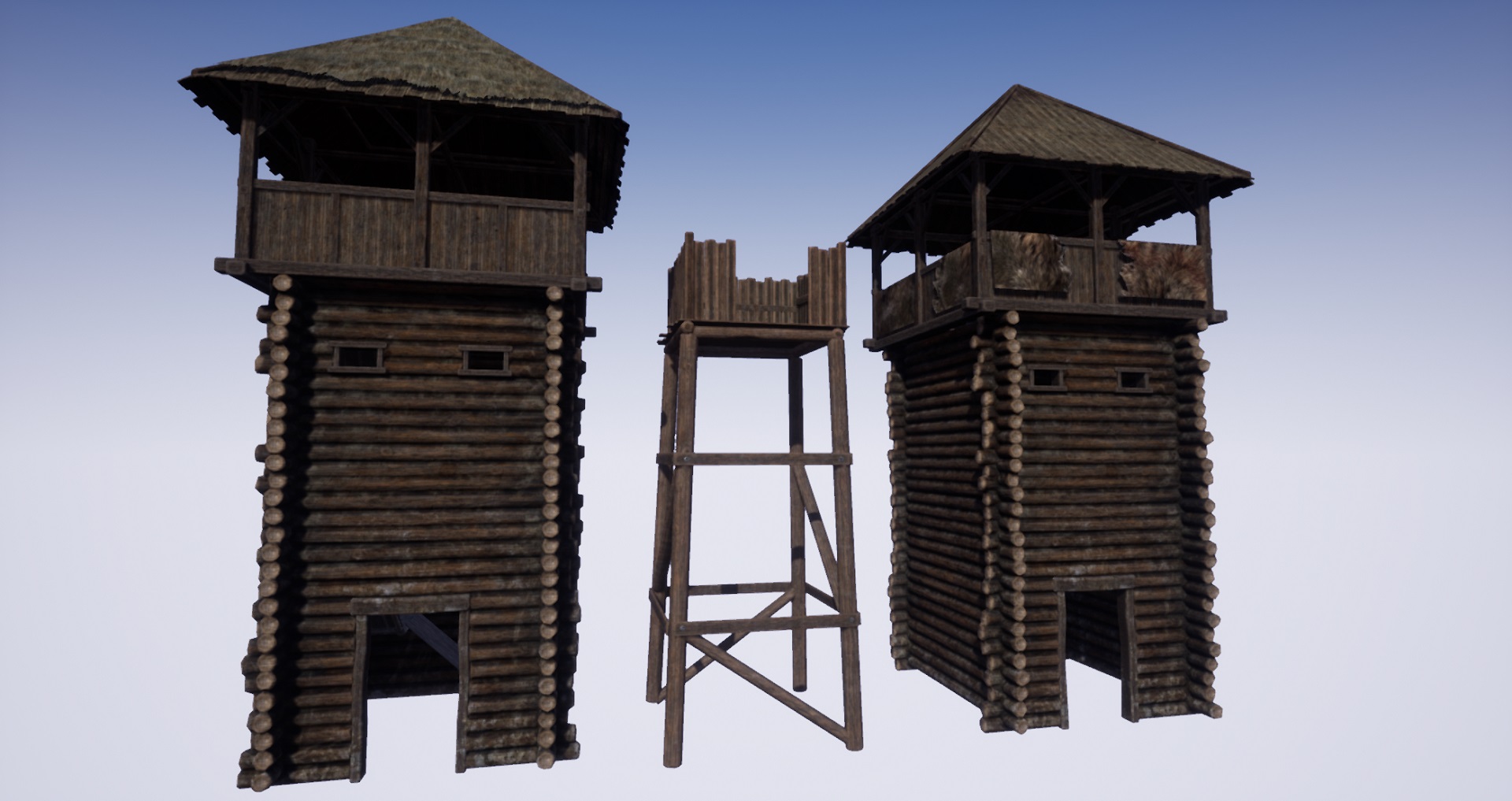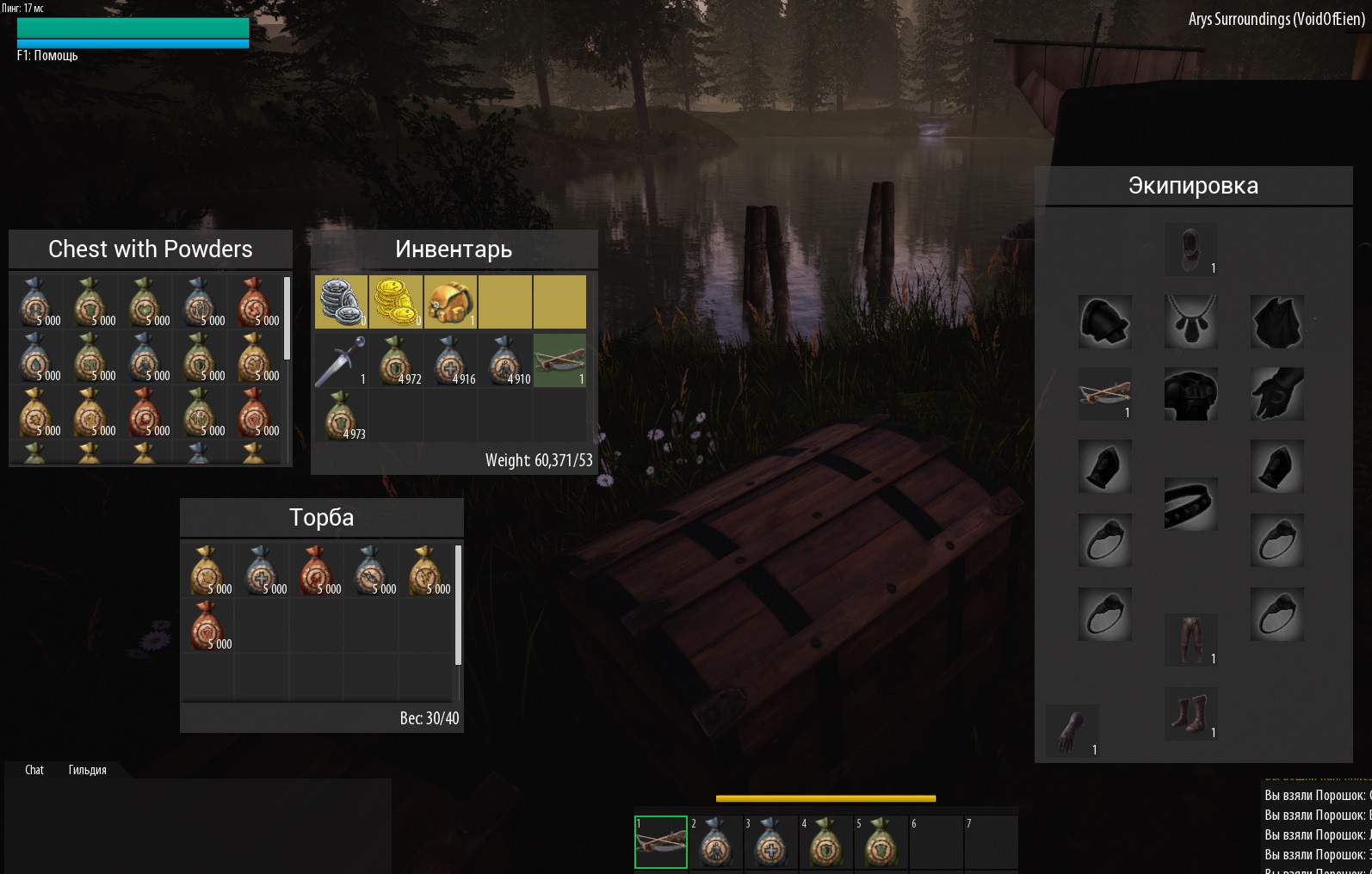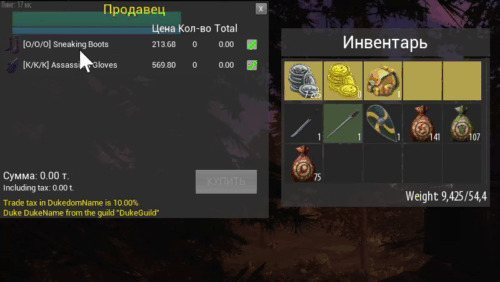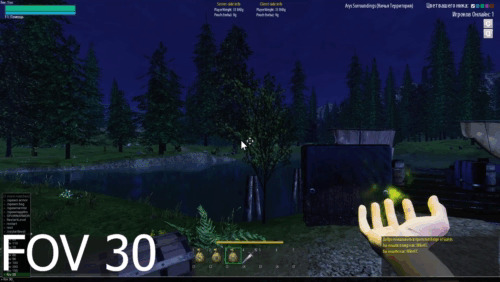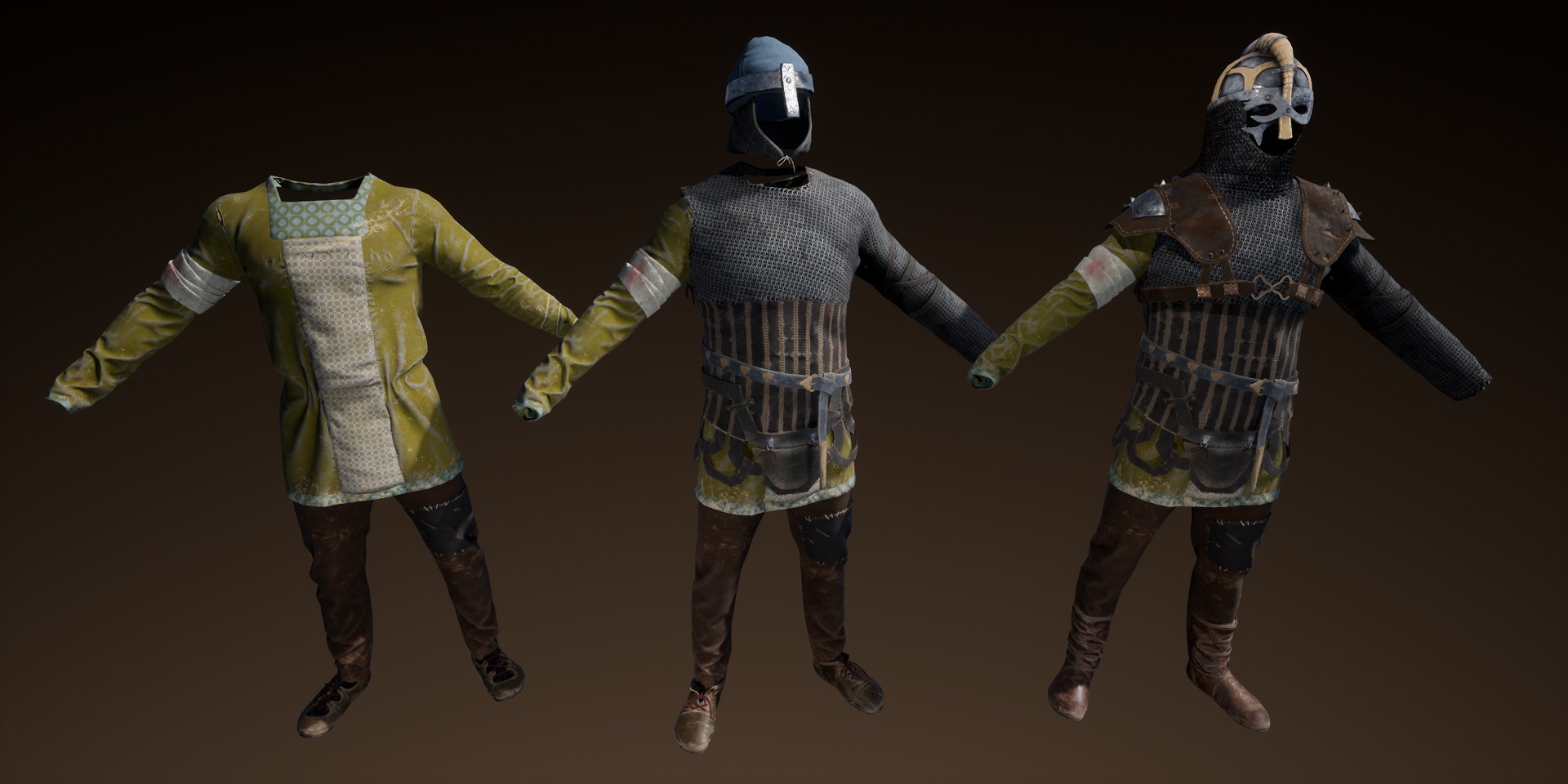Dear friends!
It’s time to share our progress in the Reign of Guilds development with you in development blog. Today we have prepared extremely interesting, as we believe, information.
You know that transition from the prototype stage to the early alpha goes through a huge layer of work and it’s extremely hard to visualize and absolutely uninteresting to players. But we decided to tell you what exactly we had been doing.
As this devblog is presented in the text format, we shall use the following structure for easy navigation:
1 | The open world:
1.1. Landscape;
1.2. Flora;
1.3. The county of Daerkunn – the city of Harbour;
2 | Castles:
2.1. Walls, wall materials and other elements of the castle design;
2.2. Towers;
2.3. Vertex painting;
2.4. Gates
3 | Magic:
3.1. Earth Magic;
3.2. Water Magic;
3.3. Air Magic;
3.4. VFX without a code yet
4 | Game mechanics:
4.1. Inventory;
4.2. Trading with vendors;
4.3. Field of View
5 |3D models:
5.1. Weaponsmith;
5.2. Master of Steel;
5.3. Robes;
5.4. Barbarian
6 |Conclusion:
6.1. General
1 | Open world
1.1. Landscape
The world of Reign of Guilds is out there, like the truth of Mulder and Scully!
When 4 continents were created in WorldMachine, we’ve immediately faced several game design problem.
ROG and mountains
It all started with mountains – their slopes were totally flat and as a result, materials of these mountains laid low, evoking despair even to game designers. We changed the relief of all mountains – now there is no flatness but snow and grass on the ridges.
ROG and hills
In terms of realism hills add credibility to the world. In terms of FP game convenience, a long play session would have been difficult because of the hills, that is why we’ve added plains.
ROG and rivers
Banks of big rivers were too steep and not beautiful enough to us as well, so we had to make new riverbeds. Now river banks are flat, rivers are calm, so Game-designer’s inner demon of perfectionism is satisfied.
ROG and landscape materials
Along with topography adjustments, we were selecting and optimizing 15 landscape materials for 4 climatic zones (winter, autumn, summer and hot summer). These materials, called layers, are layered to each other, that allows creating huge variety of combinations (for example, we put snow on dirt and suddenly we get ... dirty snow).1.2 Flora
Do you remember us preparing a bunch of biomes? So, we have taken their introduction in the game world seriously. The SpeedTree program has taken over the eighth version, becoming a really essential assistant to game developers all over the world. Plants generated by the eighth version have not only become several times better in terms of quality and optimization, but the functionality has became wider and more convenient as well. Now, it allows creating realistic plants at the previous optimization level and sometimes even improving it. We could not miss such a gift from above. Therefore, we rolled up our sleeves and started selecting biomes 2.0. We adjusted loads, seasonality, wind behavior, and as a result we have got something that is much superior to the prototype in the picture quality. In the end, we selected 12 types of forests of different variations (summer, winter, autumn, spring, coniferous and deciduous and large-leaved ones). Forests were distributed around the world with the procedural flora application functionality. What is it? UE4 allows creating a kind of aerosol paint containers, but with a variety of trees, stumps, snags, stones instead of paint. In other words, everything that a developer and community wants to see in their forest. Settings of these “containers” allow creating absolutely unique and diverse territories. Creating spawners is not the fastest and easiest process. But it is the only optimal way to fill such a huge world. This means that we manually put all trees in the locations that are points of interest. 1.3 Daerkunn County - Harbour Settlement At the moment, the work on the first county is finished by 50%. Daerkunn County is territories in the southeast of the Eastern continent. On its outskirts, there is a Harbour settlement of municipal importance. Harbour is a port settlement and stands out with NPC merchants who will forward goods to other Counties on ships and thereby embody the idea of intercontinental trade, that was actively discussed on our forum 2.1 Walls, wall materials and other castle components Most events in the ROG world will take place around castles, there will be about 30 of them on each continent. Considering such a scale, we could not simply built a castle after a castle – there must be a structure to unify and simplify this process as much as possible, while preserving the diversity and uniqueness of each object. As a result, we prepared foundations for creating castles of different levels: in counties of the initial level, these are wooden structures that will be surrounded with a wooden paling. Accordingly, the design was based on various types of paling with different methods of joining logs, platforms and stairs. The use of these elements allows unifying each castle, everything now depends only on the level designer’s imagination. *an abandoned fort on the outskirts of the world With the increase in the castle level, the foundation materials will also change. For castles made of stone, we have prepared several wall foundations (flat ones, as well as with internal passages). These elements will come to life by applying certain brickwork on them. Brickwork is a complex structure material that allows creating plenty of variations. It looks something like this: The main task is creating a visually three-dimensional material, so that a wall does not look flat. Then, this wall is simply stretched out and the world gets diversified with vertex painting (see the description below). 2.2 Towers We have done a compelling work on creating castle towers, which have a strategic function during the castle sieges. Towers with gates are not only checkpoints, they also help in the castle defense. Towers must be convenient to shoot from and offer a good view of the castle surroundings. As with walls, a variety of towers will be achieved by applying different types of brickwork and vertex painting on them.22.3. Vertex painting
We are working hard not only on the diversity of the surrounding flora and fauna, but also emphasizing the history of individual settlements, breathing life into a variety of buildings. We modify them, as if these buildings had been exposed by time and the climate of the Reign of Guilds world. For this, a vertex painting tool is used, followed by procedural generation of layering different materials. Thus, objects that will be in the northernmost latitudes will be covered with permafrost, those in humid areas - with moss and mold.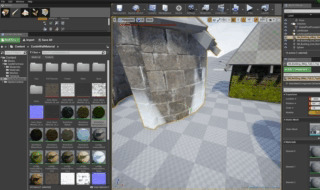
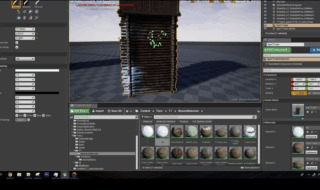
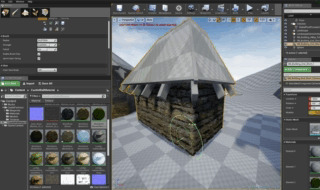
2.4 Gates
Gates in games are often just gates, in some games they close and open, in others not, sometimes they look beautiful and sometimes - really beautiful. In our game world, even gates have their concept, as their hinges include a good portion of the castle capturing mechanics. There will be a separate article devoted to the gate concept. In the meantime, we will show you how it will look and a variety of gate types in the ROG world:

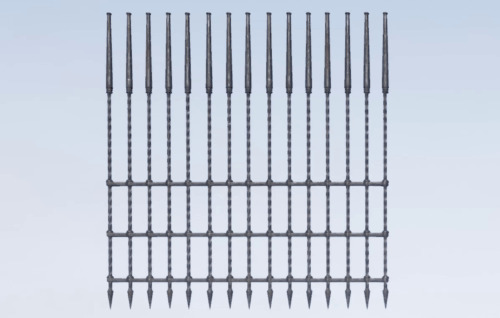
3.1 The earth magic
Stone arrow powder This magic mechanics is similar to the fiery arrow powder, the difference is in the speed of flight, distance, targeted area and stability. So that’s how it is! While it seemed like just taking a stone and throwing it.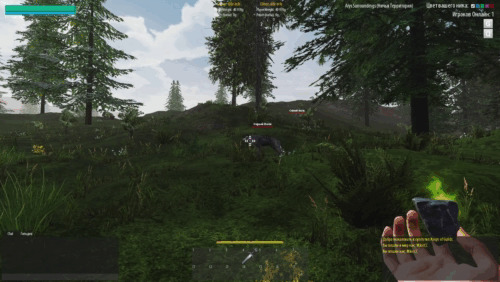
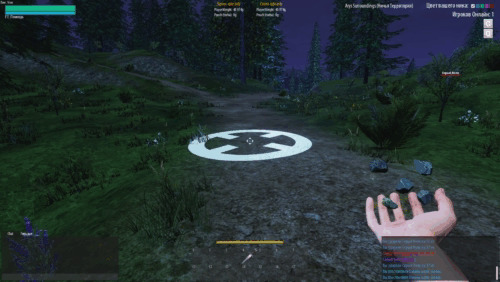
3.2 The water magic
Freezing powder For someone, it is completely disable, but for others - a protection bonus. As people say, it all depends on the view. By the way, a frozen player will be able to look at the world through the prism of ice.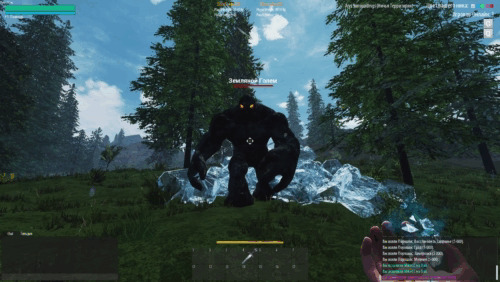
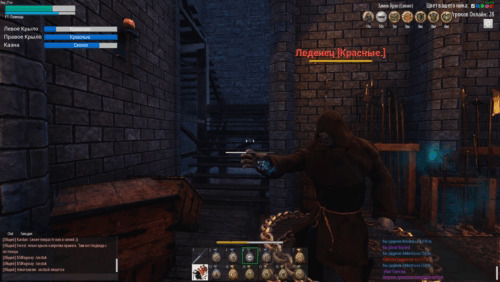
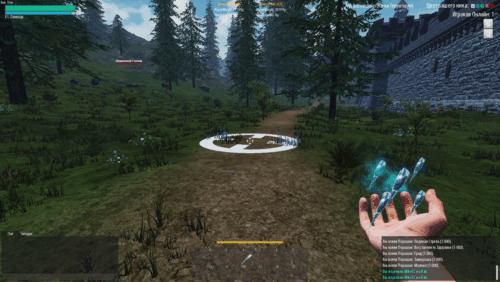
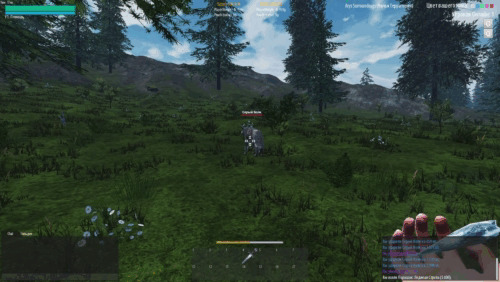
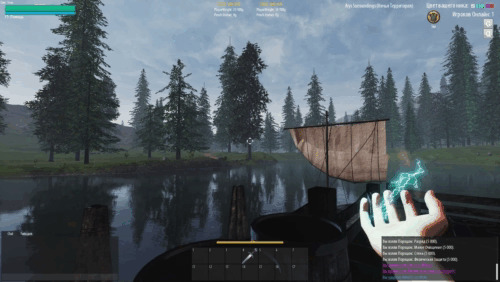
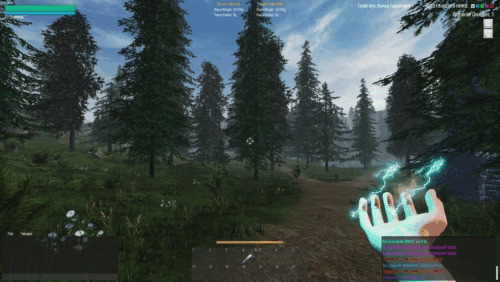
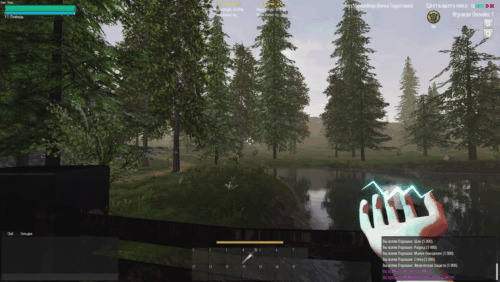
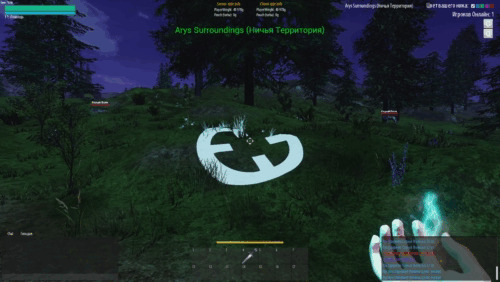
3.4 Effects without a code yet
Besides magic, that is already embedded into the game, a number of other visual effects are waiting for their code. These are the first effects to be used as a combined magic. We actively discussed this mechanics on the forum and now the ideas of the most active and devoted players start to be embodied in the game. The ash powder is a result of mixing the air and fire magic - a black smoke screen, getting into which players lose the ability to see and get gradually damaged, slowly choking in the smoke.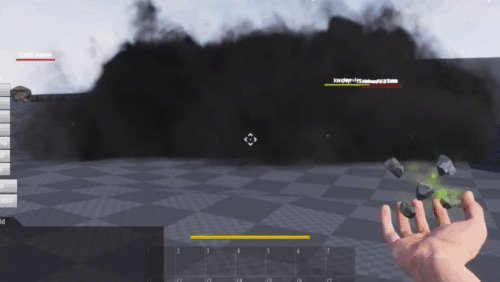
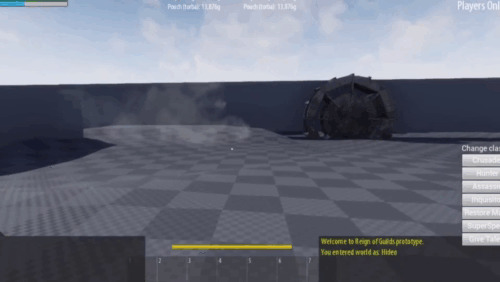
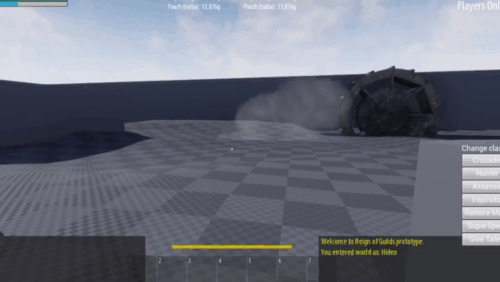
4.1 Inventory
The closer to the present, the more often a game inventory is just a container, without cells, a field where a player drags 2D object icons. This is neither good, nor bad. This is just a common practice and if there is no need to emphasize a certain game mechanics with the inventory system - why waste time of developers on it? Everything is a little more complicated in ROG. First, the specialty system in ROG is based on attributes instead of perks. Only 10% items in the world have a specialty requirement, which means that each player will be able to initially distribute the attributes of physical or magical development in order to gain an advantage over other players or simply to adjust a character to his style of playing. But what does inventory have to do with it? The reason is that up from a third to a half of the character’s attributes will be on the items put on him (equipped). It means that a character can carry a few sets of equipment for a short time change of specialty from a one-handed weapon with a shield into a two-handed weapon or temporary boring a certain attribute for self-buffing (putting on buffs). And now imagine - if you have one basket with all this junk? Is it easy to use? We think no, therefore we created several levels: equipment => inventory => main container (feedbag) => small and technical containers. Each level is limited not only in cells, but also the carrying capacity. The total load-carrying capacity is first reduced by the weight of character's equipment, then the weight of inventory and containers. Such a multi-level system creates plenty of code lines due to a huge number of checks, including those when the server verifies the information coming from a client, so that some sly player does not put a few tons of ore into his pouch with certain manipulations. Secondly, absolutely everyone in ROG uses powders, mantras and weapons. To use these items, they must be taken in the right hand, i.e. they are no longer in the inventory, but in the equipment. Then they are returned back. Suprising, isn't it? So, in order for objects not to change their order and some perfectionist does not have a heart attack, we had to develop a “item's shadow” system - when a sword is taken into the character's hand - it disappears from the inventory, but it's shadow remains there, so that it could be returned back when a player “takes off” the weapon. Otherwise, a player could have picked up some blade of grass in this cell and the precious sword would simply fall to the ground when taken off. Have you already felt the loss of this player? Thirdly, there is such a thing as karma. It affects not only the amount of lost experience, but also the number of objects lost at death. Details here . And we believe that players straight as razor blade should have really reliable cells in their inventory, that no one and nothing can make any item fall out from.4.2 Trading with vendors and Dynamic Vendor Balance (DVB)
The interaction with vendors in games is often implemented as follows: collecting loot - handing it over to a vendor - getting a reward for it. At this, any vendor will be glad to take the stuff, that is no use to anybody, and offer the same price for it. The very process of trading is quite simple: you right-click and that's it - the purchase/sale transaction is done. We went further in ROG: we recently told you about a dynamic balance system of trading with vendors and soon implemented it. NPCs, that trade in various game items, not only sell and buy goods, but make more calculations during the transaction than a greasy cob cashier. This system is meant to turn the usual getting rid of junk to traders into a real economic activity. Already now, the ROG Club members are testing purchase and sale of various products to vendors. Buying from a vendor happens like this: a player opens a window, sees a list of goods and adds them to his basket. After deciding on the purchase and pressing the confirmation button, the DVB rules are checked. If all conditions are satisfied, a player gets the goods. Otherwise, a player will have to understand the possible reasons, including: a vendor might have risen the prices while a player was choosing the goods, or a vendor can simply refuse because of a too high transaction amount. A basket is one of the shopping window major features. It is the basket that helps to protect the DVB mechanics from abusing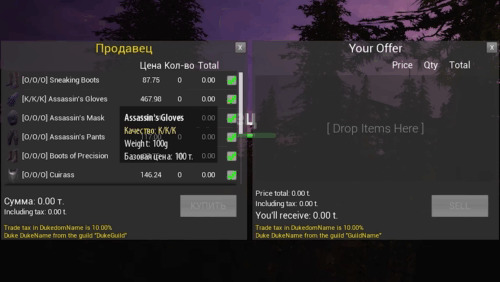
4.3 FOV or why the hand has become normal
Do you remember the prototype right hand? Not only was it moving strangely, it also did not look fine. First person animations are in the process of redevelopment and we will tell you about them later, but we have solved the problem of the hand quality. It's all about FOV or field of view. At the prototype stage, the hand image quality was low, because it was perceived as a foreign object caught in the field of view. And, located on the edge of the screen, its quality was adjusted accordingly. But our programmers have solved this problem by adjusting a customizable FOV for the hand. The FOV for the whole environment is 100-110 degrees, but 80 degrees for the hand.5.1 Weaponsmith
At the moment, we are actively working on creating weaponsmith models. A weaponsmith is a profession responsible for creating not only weapons, but also costume jewelry and siege constructions. In close combat, weaponsmiths will stand out in combining skills and having special weapons, that they have made for themselves. The weaponsmith initial levels look something like this:5.2 Master of Steel
Let's start with the Masters of Steel’s uniforms. What are unique features of their class? They are masters of inflicting and absorbing physical damage, vulnerable to magicians, of a mortal danger to physical players. They have the highest physical armor in the game and look something like this:5.4 Robes
Besides physical specialties, we did not forget about magicians. Therefore, we have prepared elemental robes of the first three levels. Robes have requirements for the corresponding elemental attributes: blue - water, green - earth, red - fire, white - air.